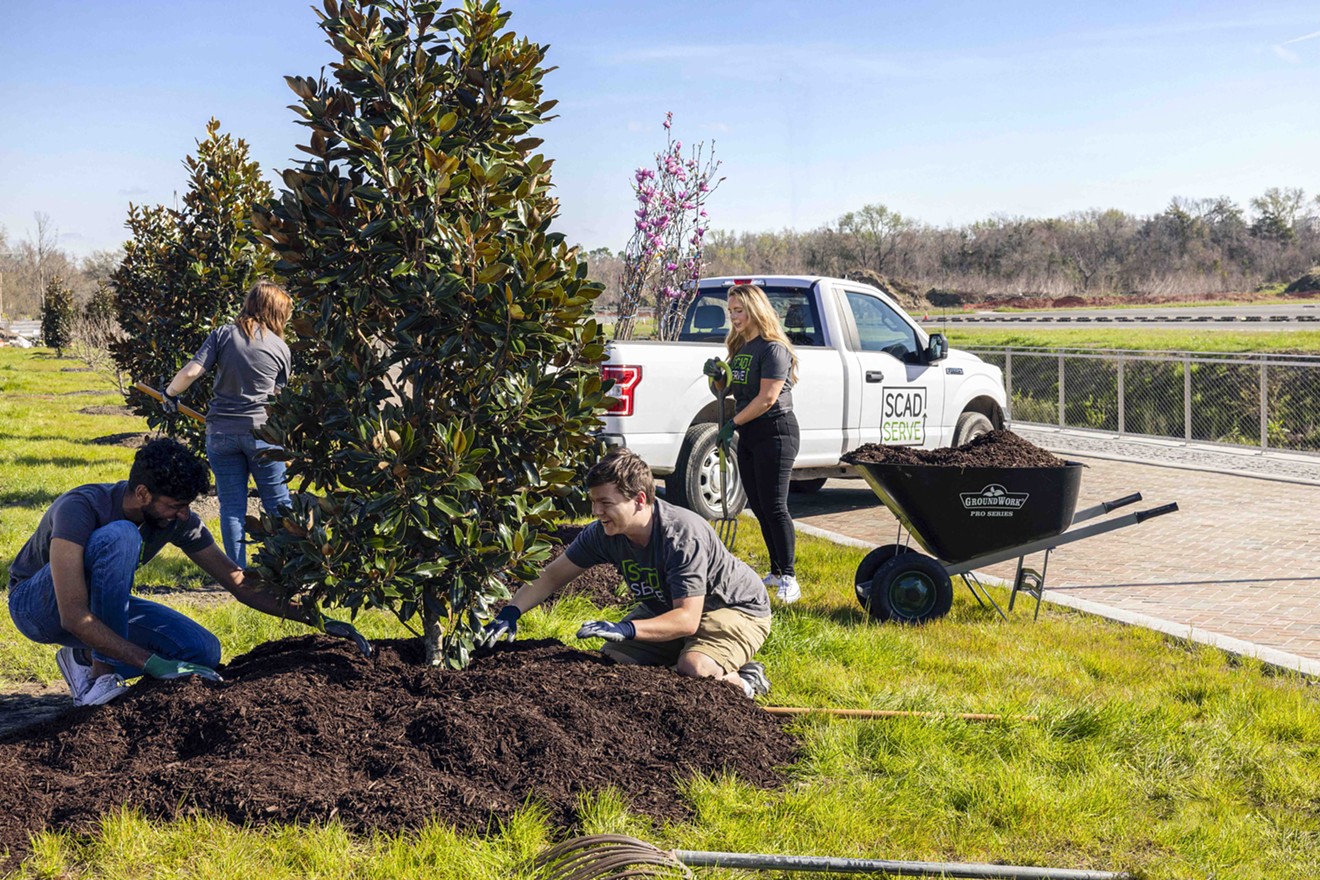The Savannah College of Art and Design engaged in a long-term project to explore the impact of trees on the environment, economy, human health, and social well-being. This timely research provides innovative concepts and solutions that grow and protect urban forests and help address tree-equity issues. Based on this in-depth research, SCAD has already leapt into action, planting or donating more than 200 trees in Savannah neighborhoods directly affected by tree inequity.
Over the last week, SCAD students, faculty and staff volunteered to plant trees in three west side communities — the Canal District, Sustainable Fellwood and the Brickyard Neighborhood — as a part of SCAD SERVE, the university’s community service initiative. Focusing on areas with the greatest need for trees, SCAD has collaborated with neighborhood leaders, the city, the housing authority and other entities to address environmental challenges. To that end, more than 60 students planted mature trees — live oaks, magnolias and fringe trees — throughout the neighborhoods in need.
During the plantings, community residents came out to watch and meet the students, expressing their gratitude and appreciation.
“We have been a forgotten community for a long time, and this is so exciting to know the students took time to come over in this area to see exactly what we were lacking in this community and be a part of making things happen,” said Cheryl Edwards, president of the Brickyard Neighborhood Association.
“Society grows, so goes the adage, when its leaders plant trees in whose shade they shall never sit,” said SCAD president and founder Paula Wallace. “In my research on how SCAD can continue to improve quality of life in our hometown of Savannah, I’ve seen the undeniable link between urban deforestation and the lives and health of its residents. Established
trees and new plantings have a direct and positive impact on economic vitality, physical and mental wellness, and beauty — and trees significantly reduce surface temperatures during warmer months. All of Savannah’s neighborhoods deserve these benefits. We cannot call Savannah the most beautiful city in the world while so many of our neighborhoods are in dire need of more natural beauty.”
Led by faculty experts, SCAD students focused their research on four Savannah neighborhoods. Overall, the most compelling findings demonstrated that a lack of trees in urban areas has a direct effect on neighborhood safety, the mental and physical health of residents, and overall quality of life. Collected data showed more affluent neighborhoods averaged nine trees per lot compared to 1.5 trees per lot in less affluent neighborhoods. Research also found such large disparities in lot size and tree coverage had a direct impact on average temperatures. During hot summer months, the average air temperatures in less affluent neighborhoods were as much as 20 degrees hotter.
“Our students are digging deep into the fundamental questions about what has to be learned to enhance a community’s resilience in the face of a warming planet,” said SCAD professor of design for sustainability Scott Boylston. “After studying other efforts to collect on-ground information on tree density, tree equity, and urban heat island effect, students are
developing a carefully crafted data collection process that could benefit any other city.”
SCAD aims to use their research findings as a roadmap for other cities, sharing how the benefits of urban tree canopies can help to combat extreme heat events while promoting energy equity.
“Our research shows the importance of tree equity and how it can improve the lives of our neighbors,” said SCAD sustainability student Riley Shelton. “With trees as our focus, we
have paved a way for citizens, local governments, and industries to be inspired to take a deep dive into this process, commit to more community engagement, and become a catalyst for change.”
SCAD plans to continue this research and host more tree planting events throughout the year.
For more information, click here.


